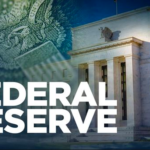Crosstown Commercial / November 16, 2020
Coronavirus & Bankruptcy – An Unfortunate Pair
Who knew that nine months ago, our lives would be turned upside down by a virus. In a world of top-notch medical care and more intelligence and communication capabilities than ever before, no one could have anticipated where we are today. And unfortunately, no matter how hard our government has worked to provide federal funding, businesses are beginning to fail. We’re seeking bankruptcy claims up the wazoo, shuttered businesses, and people filing for unemployment in massive numbers.
So how effective will our bankruptcy programs be for consumers and businesses? Thankfully, our bankruptcy program was built just for times like these. In fact, it was tough economic times that led to the first bankruptcy laws. The United States established the first official bankruptcy law back in 1800, and since that time, laws have been enacted and repealed based on various political and legal viewpoints.
Our bankruptcy program still works well today. The program that we now know as Chapter 11 was put in place due to economic panics from the late 19th century. At this time, there was a need to restructure the business legalities related to railroads in default. And since that time, our country’s bankruptcy courts have handled over 1.5 million consumer bankruptcy cases per year.
At this point, we believe that bankruptcy will continue to be an option, and this was outlined in the April 2020 report titled “Bankruptcy and the Coronavirus” which was written by David Skeel from the University of Pennsylvania. However, as the report suggests, there are some significant limitations based on our current economic climate.
- Bankruptcy is far more effective when there is a need to reorganize large businesses – it is not as useful for small to mid-sized businesses
- With the number of bankruptcy cases filed even before coronavirus, the courts are congested, and processing is slow – sometimes too late to make a difference
- To be successful, Chapter 11 assumes that the debtor has financing during the bankruptcy case
To ensure that matters don’t get worse, the Federal Reserve and Treasury must anticipate these limitations so that creative solutions can be constructed. Though the report suggests that a tidal wave of bankruptcies will be coming due to coronavirus, they haven’t struck quite yet. But this is expected to change in the foreseeable future.
Today’s business owners are feeling the pressure. Those that have been able to keep their businesses afloat are anticipating more shutdowns as coronavirus lingers. Even with recent news claiming that Pfizer and BioNTech have made great strides in identifying a vaccine that is 90% or more effective, not everyone will be getting the vaccine right away. Instead, the focus will be given to hospital staff, nursing home workers, and others considered vulnerable. Those under the age of 50 and those without any severe medical conditions will be low on the list. Further, the vaccine in the works will require two doses.
This means that most people won’t be seeing a vaccine until the end of 2021. Will business owners thrive or sustain their business that long or will the tidal wave of bankruptcy cases finally come in? This remains to be seen.





























